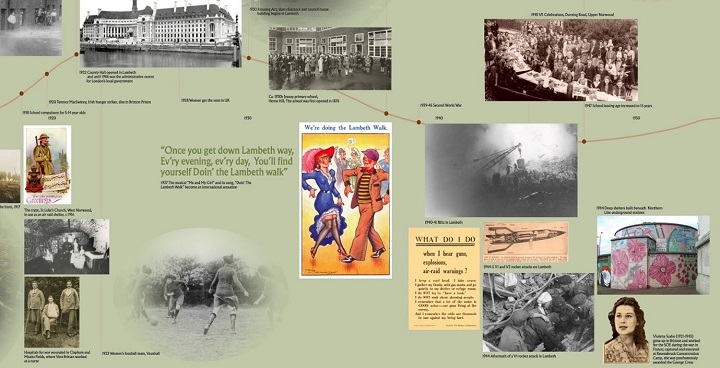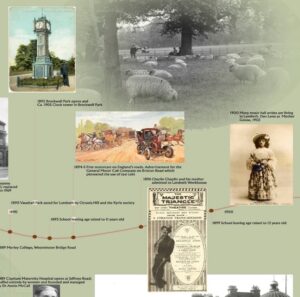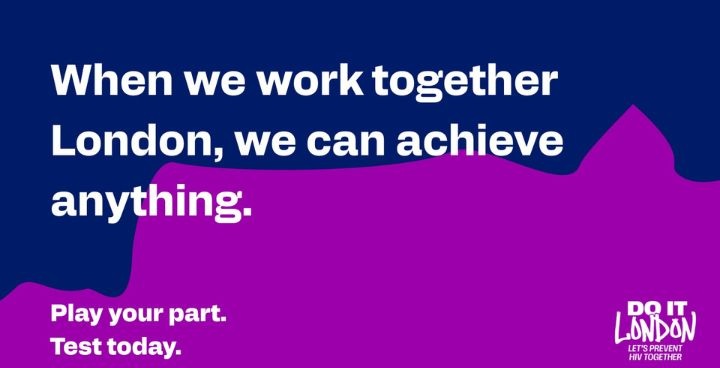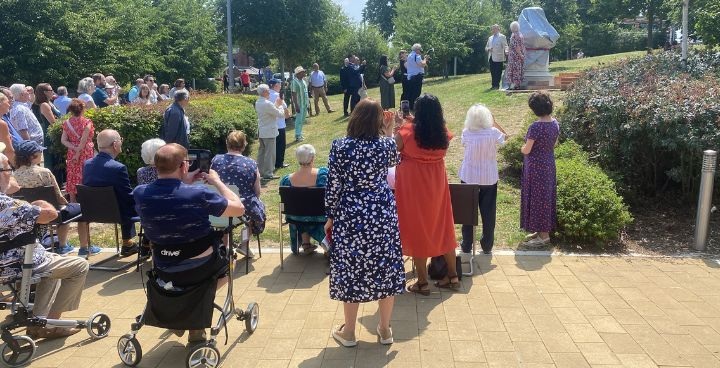
After 130 years in MInet Library, Lambeth’s Archive collection – books, legal documents, photographs, artwork, historical records, and more – is moving to a new, custom-built strongroom in Brixton Hill. The strongroom will hold over two miles (almost 3.25km) of shelving – more than the distance between the Archives’ old and new homes.
From the Ice Age to the 2020s
Picture windows on the Archives’ new building use treasures from Lambeth Archives’ collection to tell the story of our borough from the Ice Age to the 2020s. This window on Lambeth’s history invites everyone interested in Lambeth’s story to see what we hold.
The new Lambeth Archives will open to the public in January 2024.
Lambeth’s story in nine windows
- Flint axes prove Ice Age people visited Clapham and Streatham Commons.
- 1016 King Canute lands in Lambeth from Denmark to attack and capture London.
- Building work starts on Lambeth Palace in the 1300s.
- Charles, Prince of Wales, lives in Kennington Manor House in the 1620s before being crowned King Charles 1.
- 1628 – England’s first museum is founded on the collections of plants, objects and “rarities” assembled by the Tradescants.
- 1659 – Medicinal waters discovered at Streatham Spa.
- Non-conformist ministers Charles and John Wesley preach to crowds at public executions on Kennington Common in the 1740s.
- Handel’s Music for the Royal Fireworks premieres in Vauxhall Gardens, 1749.
- 1760s, Astley’s Amphitheatre – London’s first circus – draws huge crowds.
- 1780, anti-Catholic Gordon Rioters attack Lambeth Palace.
- William Blake lives on Hercules Road and publishes “Songs of Experience”.
- 1807 William Wilberforce and “the Clapham Sect” campaign for the abolition of the slave trade.
- 1819 – Surrey House of Correction opens, later becoming Brixton Prison.
- West Norwood Cemetery – one of the “magnificent seven” Victorian Cemeteries – opens 1837.
- July 1859 marks the final nights of Vauxhall Pleasure Gardens after 200 years.
- First international cricket match at Kennington Oval in 1880.
- In 1896, the young Charlie Chaplin is admitted to Lambeth workhouse.
- Stockwell opens as the southernmost station of London’s first electric tube railway.
- Vauxhall Ironworks builds first Vauxhall cars, 1903.
- Lilian Baylis relaunches the old Royal Coburg Theatre as the Old Vic in 1912.
- County Hall opens in 1922 as the home of London County Council and remains t

Extract from Lambeth Archives picture window illustrated with treasures from the 19th century collection
he home of local government until the abolition of the GLC in 1986.
- “Doin’ the Lambeth Walk” is the hit song from 1937’s “Me and My Girl”.
- 1948 – Empire Windrush brings over 1,000 Caribbean passengers, many settle in Lambeth.
- Festival of Britain, South Bank 1951.
- National Theatre opens 1976.
- 1981 Brixton Uprising in response to police stop and search powers.
- Gay Pride in Brockwell Park, 1993.
- Nelson Mandela visits Brixton in 1996 to thank the people of Britain who campaigned for his release.
- London Eye opens for the Millennium.
- 220,000 individually hand-painted hearts on the National Covid Memorial Wall since 2021.
- … Lambeth’s story continues.



